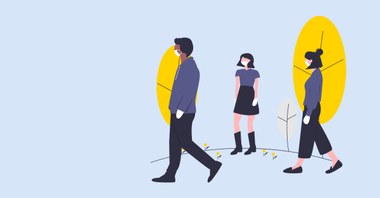Digital network Hoplr for local governments: social inclusion and citizen participation
- Hoplr for the local community
- How does Hoplr work?
- What is Hoplr used for?
- Hoplr platform for local governments
- The social impact of Hoplr
- Why is local community building important?
- What does Hoplr do for social inclusion?
- What was the effect of COVID-19 on Hoplr?
Hoplr for the local community
Hoplr is a social network – free of advertising – that connects neighbours and stimulates offline engagement. Via Hoplr, citizens easily get access to the social capital in their neighbourhood like material, knowledge, time and infrastructure.
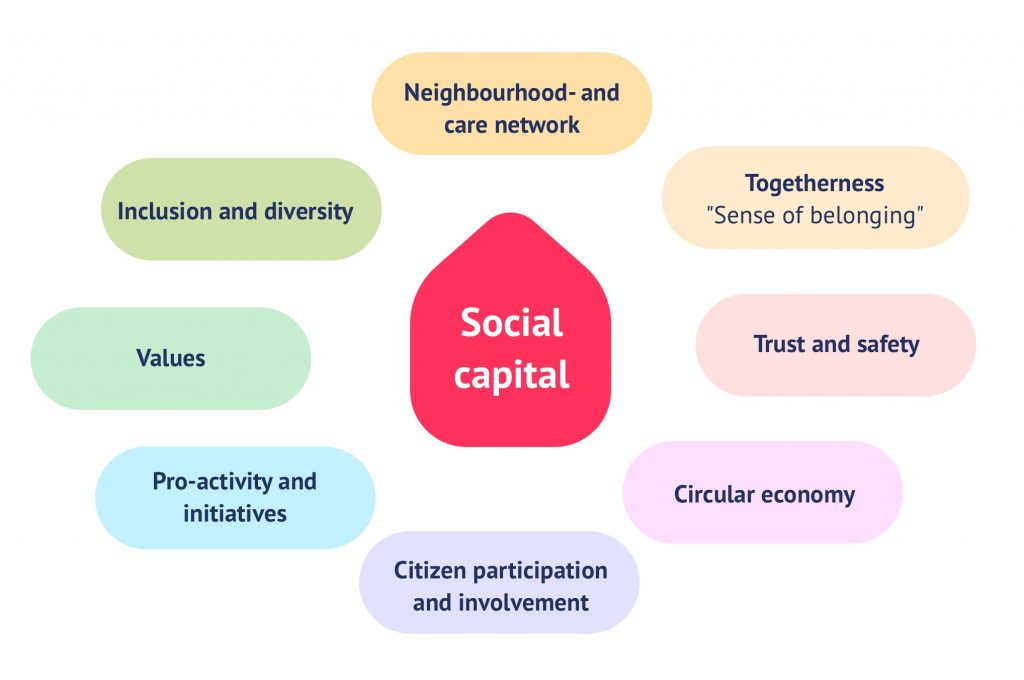
We build local communities. That is our core mission.
We want to use the power of the collective to anticipate the societal challenges of tomorrow such as aging, neighbourhood care, inclusion and citizen participation. Only in this way can we evolve towards more caring and sustainable local ecosystems.
How does Hoplr work?

The digital network, hoplr.com, connects users with their neighbourhood which is accessible to all people who live within a certain area. They gain access through a code they receive by a physical inivation letter by mail.
We connect neighbours, and stimulate physical encounters and involvement through a private social network for neighbourhoods.
Today, Hoplr is mainly active in Belgium and Netherlands, where it was founded. Hoplr is used by 500.000 households in over 2,000 neighbourhoods. 84% visit our website or app at least one time per week.
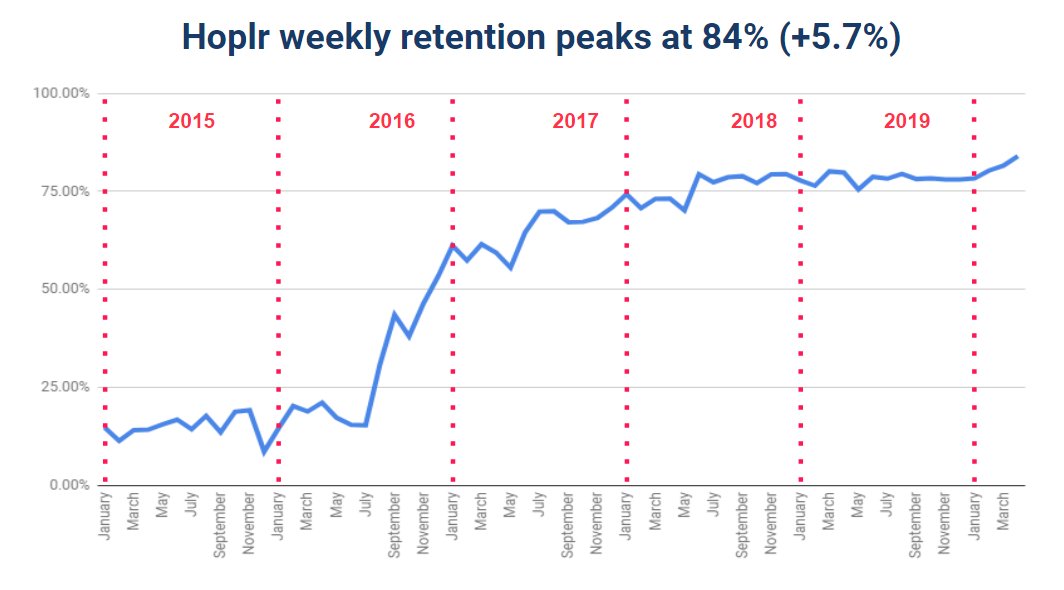
What is Hoplr used for?
The Hoplr website and app’s interfaces are similar to other well known social media and are therefore easy to use.

These are the kind of messages that are most often posted by Hoplr-users:
- Circular economy: borrowing items, giving away leftovers from a vegetable garden, exchanging goods and local services, …
- Information: staying up to date with what’s happening in the neighbourhood and asking for information
- Social contact: getting to know neighbours online and organising neighbourhood activities offline
- Citizen initiatives: sharing ideas for the neighbourhood and looking for people to get on board and volunteer
- Neighbourhood help: finding help for chores, transportation, babysit, care, …
How does Hoplr set itself apart from other social networks? In short:
- No advertising. None whatsoever. Local governments pay for a yearly license to make the network available in their region and gain access to the Service Dashboard.
- Active community building. The Hoplr team does more than product development alone – we are community builders. We not only grow our communities, but keep them healthy and positive at the same time. Read how we keep our communities positive, here.
Hoplr for the local government

Hoplr offers local governments and the public sector a Service Dashboard for neighbourhood oriented care, communication, citizen engagement and participation.
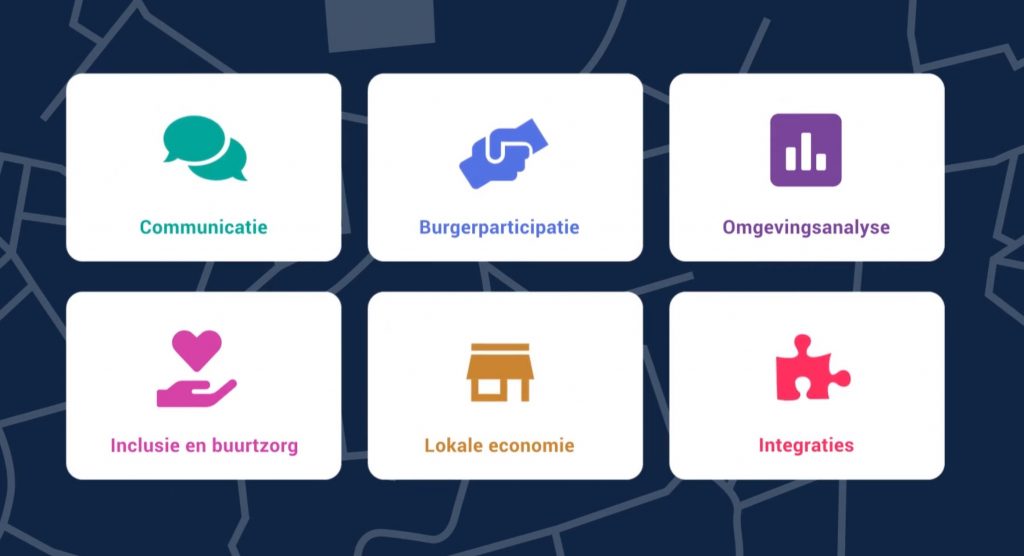
More specifically, the Service Dashboard comprises 6 modules.
- Citizen communication: share messages from the local government with one, some or all local communities within the region. Read examples of citizen communication through Hoplr,
- Citizen participation: easily conduct surveys or launch participation projects within one or multiple neighbourhoods. You can use our platform for citizen participation initiatives outside of the Hoplr communities, too. Read about all of our citizen participation functionalities in detail,
- Community service & care: use verified accounts for health care providers, community workers, community support officers and other social profiles. Read how they can use Hoplr to stimulate community care.
- Local economy: increase visibility and contributions of local organisations and associations.
- Environmental analysis: gain insights and pick up on trends through the anonymised and aggregated data stream.
- Integrations: integrate existing applications and datasets with our OpenAPI.
The social impact of Hoplr
Local community building is essential in order to tackle societal challenges such as inclusion, community care, aging and citizen participation.

for corona relevant innovation, implementation and impact
Why does community building contribute to social inclusion and citizen participation?
Local community building is essential in order to achieve meaningful inclusion and citizen participation.
Within our own social circle and on social media, we rarely encounter people with a different background, language, culture or opinion. This causes a distorted world view, and in some cases even extremism.
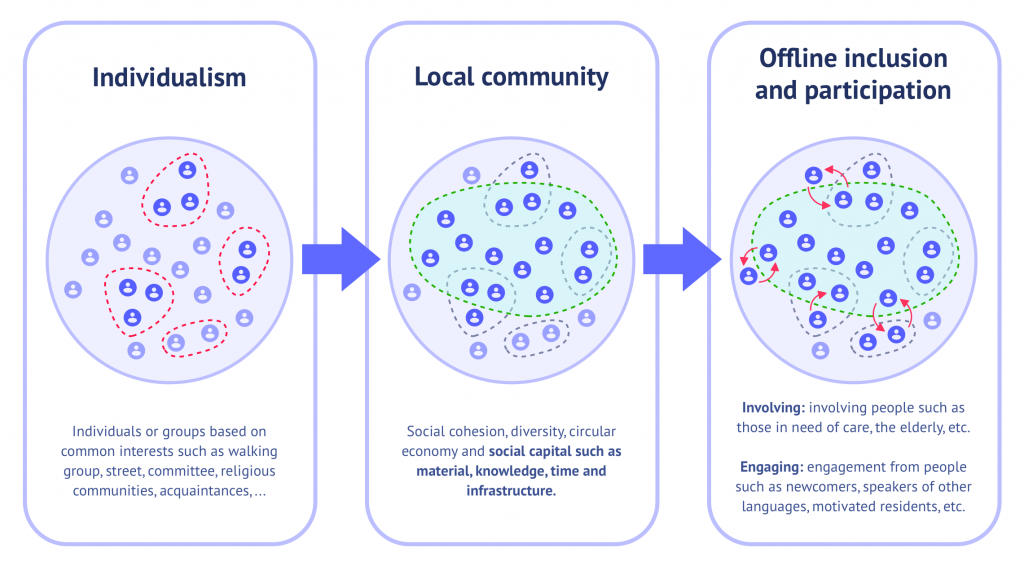
By building a network (both literally and figuratively) of people who have nothing in common but their neighbourhood, citizens can broaden their perspectives and start looking out for other members of the local community.
How do community building and Hoplr contribute to social inclusion and citizen participation?
PHASE 1: Social Cohesion
Hoplr leads to new social contacts online on the one hand, but more importantly, it stimulates physical encounters. This offline contact is essential to trigger involvement in the local community and ultimately, citizen participation.
- Members ask each other for help (babysit, groceries, a trip to the hospital, gardening,…);
- exchange items (give away leftovers, borrow a ladder, look for arts and crafts supplies,…);
- and organise neighbourhood activities (neighbourhood get-togethers, info sessions, neighbourhood cleanups,…).
A survey with 100.000 Hoplr-users showed that 32% had already met neighbours in real life because of Hoplr.
PHASE 2: Inclusive neighbourhood
Gradually, one neighbourly interaction at a time, the local community successfully involves more and more members who may otherwise be underrepresented when it comes to citizen participation, but who could benefit from being included the most.
This transforms the local community into an inclusive, caring neighbourhood. We do this by lowering the (psychological) threshold in two important ways.
- Observational learning: seeing just one request for help get a response online can cause a ripple effect. Neighbours see what others have done for each other, which makes it easier for them to direct their requests for help to the neighbourhood.
- Stepping outside the role of ‘a person in need’: people in need (with a disability or low income, elderly or sick people,…) don’t register to Hoplr as such. They register as members of the local community and soon realise that they, too, have plenty on offer.
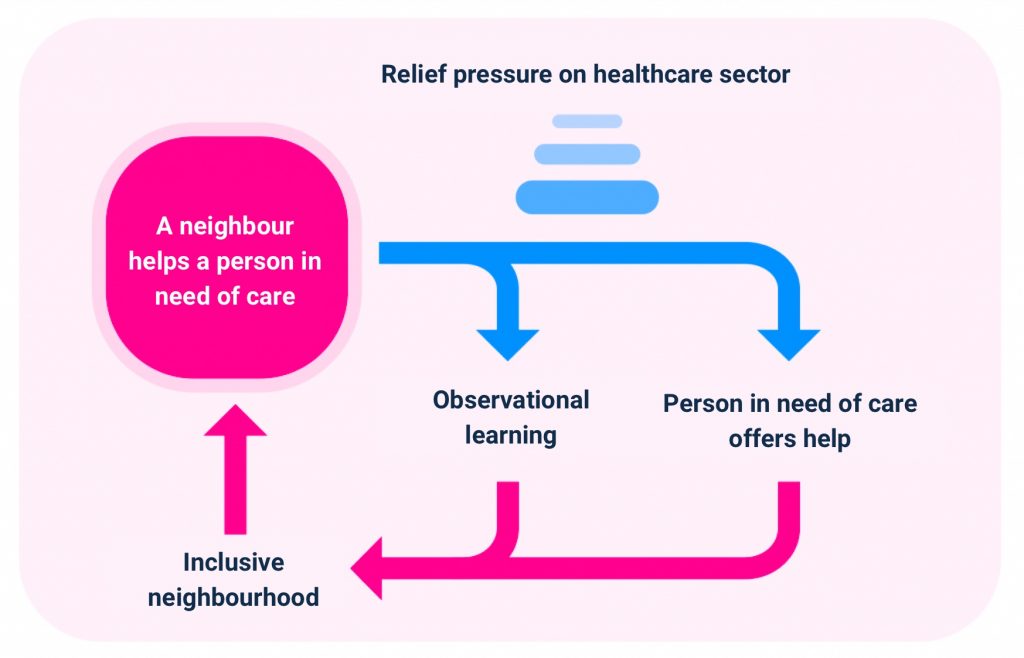
PHASE 3: Meaningful citizen participation
Firstly, Hoplr stimulates connection and involvement through social cohesion, both online and offline. Next, we create a stronger sense of belonging, where everyone gains equal access to the social capital of the neighbourhood.
Now, in this third phase, we’ve successfully shifted the focus from individual to local community. This way, members start to look out for one another, and have more understanding for everyone’s individual situation and beliefs.
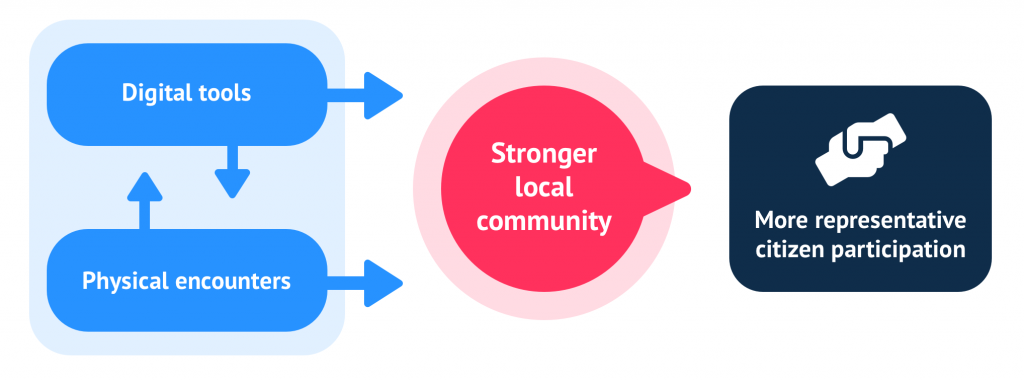
One of the things that they’ve also come to understand, is that there is no programme and there is no service for loneliness. The only way that we can address loneliness, is by building community, by building deep relationships.
Cormac Russell
What was the effect of COVID-19 on Hoplr?
Impact of the local community on corona crisis
Ever since the third week of March 2020, the neighbourhood feeds of Hoplr have looked somewhat different. Users have set up thousands of heartening acts of solidarity.
Due to the current measures against corona (‘social distancing’ in particular), our physical contacts have become limited. The digital neighbourhood network allows for risk-free contact with our neighbours as well as our local government during corona.
The University of Ghent conducted a research that showed the importance of a cohesive local community during these trying times. The results show the potential impact of Hoplr on this crisis, too.
